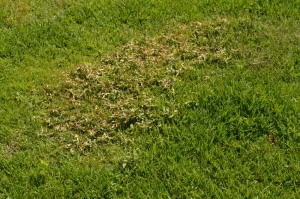Spring will be here before you know it. If you have your sights set on a healthy, green, crabgrass-free lawn this year, the time to act is now. According to experts, early spring is the best time to prevent this invasive weed. Read on to learn how to prevent crabgrass in spring before it takes over your yard.
Timing is Everything
Timing is crucial in the battle against crabgrass. The most important part of preventing its spread is to stop it before it can take hold of your lawn. Once the first thaw of spring occurs, it’s time to act, so anticipate its arrival and be prepared. Crabgrass can begin to grow after only one or two days when soil reaches 55 degrees Fahrenheit. Determine your soil temperature by using a soil temperature probe from your local garden supply store.
What to Do
- Weed control: crabgrass germinates from early winter to late summer, so begin using a pre-emergent weed control in the early spring. It is quite difficult to eradicate crabgrass once it has taken root and bloomed, so treating your lawn with pre-emergent weed controls can help reduce its growth and spread. Two separate treatments may be necessary if your lawn was afflicted with crabgrass the prior year. These treatments should be applied in the early spring and early summer.
- Fertilize: applying a high-nitrogen fertilizer in early spring can help promote a dense lawn that will choke out crabgrass. Fertilizer must be applied during the germination period for crabgrass from January through June and avoided during its blooming stage from July to September. Waiting until late summer to fertilize will promote the growth of crabgrass instead.
- Water: water until you lawn’s soil is moist. Proper irrigation is an important part of your watering routine. Ensure that the water reaches the roots of your grass so it can absorb nutrients and moisture. Refrain from watering again until conditions are drier and your lawn begins to show signs of drought.
- The Hands-On Approach: weeding crabgrass patches by hand as soon as they appear is vital to stopping its spread. Crabgrass grows rapidly and can expand its patch size in only a few days, so do not wait: address even the smallest patch. Yank the grass out by the root and discard it immediately as patches left in a pile on your lawn can reseed throughout your lawn. Prevent reseeding by covering the newly weeded area with mulch.
- Mow: cut your lawn regularly and frequently at a height of at least 3 inches. During the spring, when grass is actively growing, it is best to mow twice per week. Mowing once a week in summer should suffice.
For additional help in creating a lush, crabgrass-free lawn, give Free Spray Lawn Care a call at 419-529-5296.



Comments (0)
Thanks for your comment!
Thanks for your feedback! Your comments have been successfully submitted! Please note, all comments require admin approval prior to display.
Error submitting comment!
There is a problem with your comment, please see below and try again.